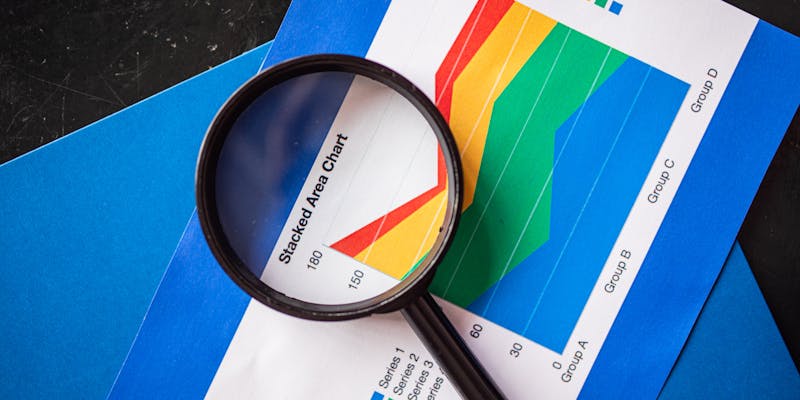What Is a Commodity Swap? And How Does It Work?
Nov 21, 2024 By Darnell Malan
Commodity swaps have been a very important aspect of the finance sector, especially for any business and investment enterprises dealing with commodities. If you are interested in knowing what commodity swap is and how it works, then you have ended up on the right page.

In this article, we shall define commodity swaps, explain the basics of their mechanics, and then try to illustrate how it all works through an example. By the end, you will have a pretty good understanding of this critical financial derivative and how it serves as a tool for risk management among market participants.
What is a Commodity Swap?
Essentially, a commodity swap is a form of financial derivative that provides for the exchange of cash flows that relate to a commodity. In most instances, commodity swaps are geared towards mitigating risks associated with price fluctuations of various commodities, particularly oil, natural gas, metals, and agricultural products. Actually, going into a commodity swap offers parties an opportunity to level their cash flows and shield themselves against movements of adverse prices.
In a traditional commodity swap, two counterparties agree to exchange cash flows based on the price of a specific commodity over a predetermined period. The amount to be exchanged might be at a fixed price by one party and a floating price by the other party that changes with market conditions. Both counterparties manage to hedge possible price volatility in the commodity market.
How Does a Commodity Swap Work?
The mechanism of working on commodity swaps is quite simple. Now, let's go about listing the essential elements forming a commodity swap agreement:
Counterparties
A commodity swap is at least between two parties. Such counterparties may involve companies that produce or consume commodities or financial institutions acting as intermediary agents for such a transaction.

Fixed and Floating Prices
The swap contract specifies both a fixed price and a floating price for the commodity involved. Typically, the fixed price is established at the contract's inception, providing predictability and stability for the duration of the agreement. This fixed price protects the buyer from fluctuations in market prices, ensuring that they know their costs upfront.
In contrast, the floating price fluctuates based on a market index, such as the spot price of the commodity, which can change daily due to market dynamics. This variability allows sellers to potentially benefit from rising market prices while also exposing buyers to risks associated with those changes.
Cash Flow Exchange
During the lifespan of the swap, counterparties engage in regular cash flow exchanges based on the pre-agreed prices. The fixed-price payer is obligated to make payments when the market price of the commodity exceeds the fixed price, compensating the counterparty for the difference.
This mechanism protects the fixed-price payer from unexpected price surges but can also lead to significant cash outflows during bullish market conditions. Conversely, if the market price falls below the fixed price, the fixed-price payer enjoys a favorable position, effectively gaining from the difference and maintaining financial stability despite market fluctuations.
Settlement
The settlement of cash flows can occur at set intervals or at the end of the contract term, depending on the terms outlined in the agreement. Settlement frequency is flexible and can be tailored to meet the needs of both parties; however, it is most commonly conducted quarterly or annually to align with financial reporting periods.
Regular settlements can help manage cash flow and reduce exposure to market risk, while end-of-term settlements might simplify accounting and provide a comprehensive view of the transaction's financial impact. Regardless of the chosen frequency, clarity and transparency in the settlement process are crucial for maintaining trust between counter parties.
This framework lets participants lock in prices and manage their exposure to prices going up and down, giving some degree of certainty in their financial planning.
The Role of Commodity Swaps in Risk Management
Commodity swaps are risk management instruments essential for business-household-related industries in whose activities are sensitive to movements in commodity prices. An example is an oil- or natural gas-dependent energy company that can hedge against changes in prices through commodity swaps, hence assuring them to run the affairs of the business smoothly with regard to their cost of operations.
Through the stabilization of cash flows, firms tend to be relieved of pressures put across on the profitability and business continuity that volatile commodity prices may impose. Commodity swaps also allow market users to harmonize their financial planning with their operational activities.

The airline company can enter into a commodity swap for protection against rising fuel prices. The airline will hedge its fuel consumption at an appropriate price level by locking a fixed price for jet fuel. It will make projections about its fuel expenses and incorporate them into budgeting and financial forecasting.
Role of Financial Institutions
The financing institutions often play a very core role in the swap of commodities. They act as intermediaries by helping structure and execute swap agreements with counterparts. Thus, they offer precious expertise in establishing risks, commodity pricing, and adhering to regulatory requirements.
Moreover, financial institutions can themselves be counterparties, thus providing liquidity to the market. Liquidity is a fundamental factor that keeps the swap market active by allowing participants to switch in and out of positions easily. Without the presence of these institutions, the commodity swap market would have tremendous problems associated with both pricing and counterparty risk.
Conclusion
A commodity swap is one type of financial derivative that is extremely instrumental in helping the participants hedge against the adverse risks of price volatility in various commodities. It is basically a tool intended to stabilize incomes and control costs through the exchange of cash flows based on fixed and floating prices. An appreciation of how these arrangements work might position a business, its investors, and the trade financial institutions better within these commodity markets.

May 20, 2024 Triston Martin

Feb 15, 2024 Susan Kelly

Jan 07, 2024 Susan Kelly

Dec 23, 2023 Triston Martin

Sep 26, 2024 Aldrich Acheson

Nov 21, 2024 Darnell Malan